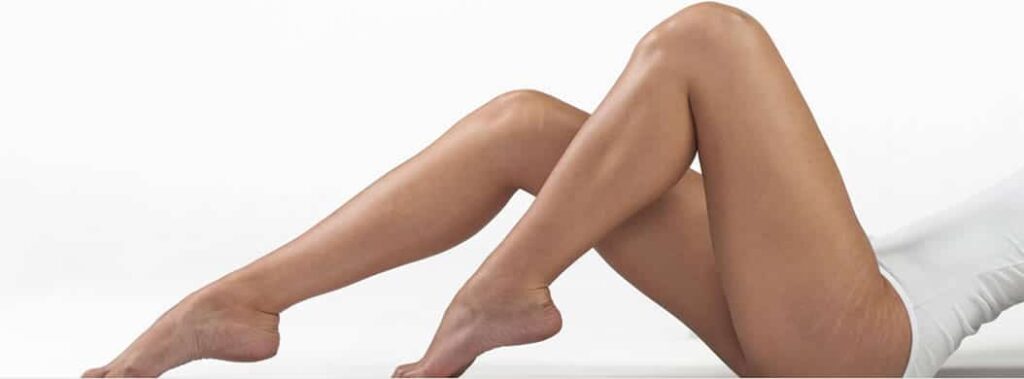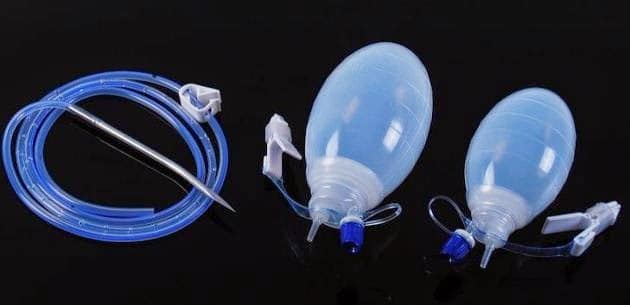Exploring Jawline Contouring Varieties
Surgical Options
Surgical methods offer permanent changes. They include chin implants and jaw reduction surgery. These options reshape the jawline, providing a more defined structure.
Chin implants increase the size and projection of the chin. This balances facial features. Jaw reduction surgery reduces the width of the jaw. It creates a slimmer face shape.
Non-Surgical Options
Non-surgical methods are less invasive. They involve fillers and injections. These options add volume and definition without surgery.
Fillers enhance the jawline by adding volume. They offer temporary results but have shorter recovery times. Injections can also modify the appearance of the jawline muscles, making them less prominent.
Choosing The Right Option
The choice between surgical and non-surgical methods depends on individual goals.
For significant changes, surgical options are best. They provide lasting results. For subtle enhancements or those unsure about surgery, fillers are a great option.
Each method suits different aesthetic goals and recovery times. It’s important to consult with a professional to determine the best option for your needs.
Duration of Jawline Contouring Results
Surgical Longevity
Surgical jawline contouring offers permanent changes. Once healed, the reshaped jaw maintains its form unless impacted by significant weight fluctuations or trauma. Patients usually see the final results after swelling subsides, typically within six months.
However, aging can alter appearances subtly over years. It’s crucial to adopt a healthy lifestyle to preserve surgical outcomes.
Non-Surgical Endurance
Non-surgical methods like fillers provide temporary enhancements. These results last between 6 to 18 months. The longevity varies based on the type of filler used and individual metabolism rates.
Regular maintenance sessions are necessary to keep the desired look. Factors such as sun exposure and smoking can shorten the duration of these non-surgical results.
Follow-Up Care
Proper aftercare is essential for both surgical and non-surgical jawline contouring. Adhering to post-procedure instructions accelerates healing and ensures lasting results. Regular check-ups allow professionals to monitor progress and address any concerns promptly.
A balanced diet, adequate hydration, and skincare routine also contribute significantly to maintaining outcomes.
Understanding NYC Jawline Contouring Costs
Cost Range
The cost of jawline contouring in New York City can vary significantly. Prices generally range from $3,000 to $7,000. This wide range reflects various factors including the complexity of the procedure and the materials used.
Patients should expect to see a variation in price based on the specifics of their case. The extent of contouring required can impact the final cost.
Location Impact
The location within New York City plays a crucial role in determining the overall cost. Practices located in more upscale neighborhoods often charge more due to higher operational costs.
Clinics situated in Manhattan, for instance, might have higher rates compared to those in other boroughs. This is something patients should consider when planning their procedure.
Surgeon Expertise
The expertise of the surgeon is a critical factor that influences cost. Highly experienced surgeons with a proven track record may command higher fees.
Their expertise ensures precision and safety, leading to better results and fewer complications. It’s essential for patients to weigh the surgeon’s skills against the cost to make an informed decision.
Post-Operative Care Quality
Quality post-operative care is paramount for a successful recovery. Facilities that offer comprehensive aftercare services may include these costs in their pricing structure.
Good aftercare minimizes risks and promotes quicker healing. Patients should not overlook this aspect when evaluating total expenses.
Factors Impacting Jawline Surgery Pricing
Surgeon Experience
The surgeon’s expertise significantly influences the cost of jaw contouring surgery. Highly experienced surgeons often charge more due to their proven track record of success and demand. They bring years of practice and precision to the table, which can lead to better outcomes but at a higher price.
Surgeons with less experience might offer lower rates. This doesn’t always mean lower quality but reflects their journey in building a clientele.
Procedure Complexity
Complex cases require more time and skill, directly impacting the average cost. The extent of modifications needed varies per individual, affecting the overall pricing. Simple adjustments might cost less, whereas extensive reshaping could drive up the expense.
Method Chosen
The chosen technique also plays a crucial role in determining the cost. Traditional surgical methods may have different pricing structures compared to non-surgical options like fillers or thread lifts. Each method has its own set of requirements for equipment, materials, and time spent, influencing the final bill.
Additional Costs
Often overlooked are additional expenses not included in the initial quote. Pre-operative tests ensure suitability for surgery, while post-operative care aids recovery but adds to the total cost. These extra fees can surprise patients if not discussed upfront.
Geographic Location
Practices in larger cities typically charge more than those in smaller towns due to higher operational costs and demand. For instance, as discussed earlier regarding NYC jawline contouring costs, urban centers have a premium on medical services reflecting in higher charges.
Jawline Contouring for Face Slimming
Facial Definition
Jawline contouring can transform facial features, creating a more defined and slim appearance. This procedure targets the jowls, jaw bone, and surrounding area to enhance the facial structure. It reduces the appearance of wrinkles and slack skin, contributing to a youthful look.
Patients often notice a sharper jawline that frames their face better. The reduction in skin sagging around the jawbone area significantly improves their profile.
Procedure Options
There are various methods to achieve a slimmer face through jawline contouring. Dermal fillers are popular for non-invasive enhancement. They add volume strategically to reshape the facial contours without surgery.
For more permanent results, surgical options adjust the jawbone itself. These procedures can dramatically change the face’s shape but involve longer recovery times. Swelling and the need for a compression garment are common post-surgery.
Personalized Approach
Choosing the best procedure requires a personalized approach. Factors like existing facial features, skin condition, and personal goals play crucial roles. A consultation with a specialist helps determine which method—filler or surgery—matches an individual’s face slimming objectives.
Professionals consider each case uniquely, ensuring recommendations align with desired outcomes and lifestyle considerations.

Preparing for Your Jawline Surgery
Find Surgeon
Choosing the right facial plastic surgeon is crucial. Look for someone with a strong track record in facial plastic surgery, specifically jawline surgeries. During your initial consultation, assess their understanding of face slimming techniques and their experience with chin surgery.
It’s essential to feel comfortable with your surgeon. They should answer all your questions thoroughly.
Understand Procedure
Understanding the surgical procedure is vital. Your surgeon will explain how they use incisions, possibly inside the mouth, to minimize visible scarring. They may discuss the use of implants to enhance the jawline shape.
Ask about the type of anesthesia used, typically general anesthesia, and how it might affect you.
Discuss Expectations
Discussing your expectations openly with your surgeon is important. This conversation should cover potential outcomes and any risks associated with surgery. A good surgeon will be honest about what can and cannot be achieved through surgery.
Recovery Questions
Inquire about the recovery process and post-operative care. Ask specific questions like:
- How long will recovery take?
- What medications will I need?
- When can I return to work or school?
Understanding these aspects helps prepare mentally and physically for what’s ahead.
Recovery and Expectations Post-Surgery
Recovery Timeline
Recovery from jawline contouring surgery varies between patients. Most see a significant improvement in swelling and discomfort within the first two weeks. Complete healing, however, can take up to six months. During this period, adherence to operative instructions is crucial for minimizing risks and ensuring a smooth recovery.
Patients should expect some downtime immediately following the procedure. This typically involves taking time off work and avoiding strenuous activities for at least four to six weeks. The exact recovery timeline heavily depends on the patient’s overall health and the complexity of the surgery performed.
Post-Operative Care
Following surgery, patients receive detailed care instructions from their surgical team. These guidelines cover everything from managing pain to preventing infection. Common advice includes applying ice packs to reduce swelling, taking prescribed medications, and attending follow-up appointments.
Proper care after leaving the operating room plays a pivotal role in reducing complications like nerve damage or infection. Patients are also advised to avoid any activity that could impact the healing process negatively.
Setting Expectations
It’s essential for patients to have realistic expectations about both immediate and long-term results. Initially, swelling may obscure the surgery’s outcome. As healing progresses, however, improvements in jawline definition become more apparent.
Long-term satisfaction with jawline contouring surgery is high among patients who follow their post-operative care plan closely. While insurance may not cover all costs associated with the procedure, discussing options with your insurance provider beforehand can help manage financial aspects related to care.
Discovering the Benefits of Jawline Contouring
Aesthetic Gains
Jawline contouring brings significant aesthetic benefits. It enhances facial symmetry and definition, making features more pronounced. The procedure can involve bone reshaping or the addition of a chin implant. Either way, the goal is to create a more balanced appearance.
Patients often notice a sharper, more defined chin after recovery. This change can dramatically alter one’s look, making it align better with their desired self-image.
Self-Confidence Boost
The impact on self-confidence cannot be overstated. Looking in the mirror and seeing the desired changes can lead to a profound increase in satisfaction with one’s appearance. This boost in confidence affects various aspects of life, from personal relationships to professional opportunities.
Feeling good about how you look often translates into a more positive outlook on life. Many report this as a key benefit post-surgery.
Health Advantages
Beyond aesthetics, jawline contouring offers non-aesthetic benefits too. For some, it improves jaw function and provides relief from discomfort associated with jaw issues. Following the surgeon’s instructions closely during recovery ensures these health benefits are maximized.
These improvements can significantly enhance quality of life, especially for those who have lived with chronic discomfort for years.
Closing Thoughts
Jawline contouring offers a transformative solution for those seeking to enhance their facial aesthetics, combining medical expertise with cosmetic artistry. Understanding the factors that influence the cost, alongside the potential benefits and recovery expectations, empowers you to make informed decisions about your journey towards achieving your desired look. Whether it’s for face slimming or overall confidence, jawline contouring stands out as a significant investment in yourself. With options varying widely in approach and price, your choice must align with both your aesthetic goals and budget. As you contemplate this decision, remember to consult with experienced professionals who can provide personalized advice tailored to your unique needs. Ready to take the next step? Reach out to a trusted surgeon today and explore how jawline contouring can redefine your appearance and boost your self-esteem.
Frequently Asked Questions
What are the different types of jawline contouring available?
Various jawline contouring options include surgical reshaping, filler injections, and non-surgical skin tightening methods, each tailored to meet specific aesthetic goals.
How long do the results of jawline contouring last?
The duration of jawline contouring results varies by procedure: surgical adjustments can be permanent, while fillers may last 6 to 18 months.
What is the average cost of jawline contouring in NYC?
Jawline contouring costs in NYC vary widely, with prices ranging from $1,500 for non-surgical treatments to over $15,000 for surgical procedures, depending on the complexity and type of treatment.
What factors affect the cost of jawline contouring surgery?
Factors impacting pricing include the surgeon’s expertise, procedure complexity, anesthesia fees, and facility costs.
Can jawline contouring create a slimmer face appearance?
Yes, jawline contouring can significantly slim the appearance of the face by refining the jaw’s shape and reducing excess fat or skin.
What should I expect when preparing for jawline surgery?
Preparation involves consultations with your surgeon to discuss goals and expectations, possibly undergoing medical evaluations or adjusting current medications.
What is the recovery process like after jawline surgery?
Recovery may involve some swelling and discomfort initially but typically allows for a return to normal activities within a week or two. Follow-up visits are essential for monitoring healing progress.











